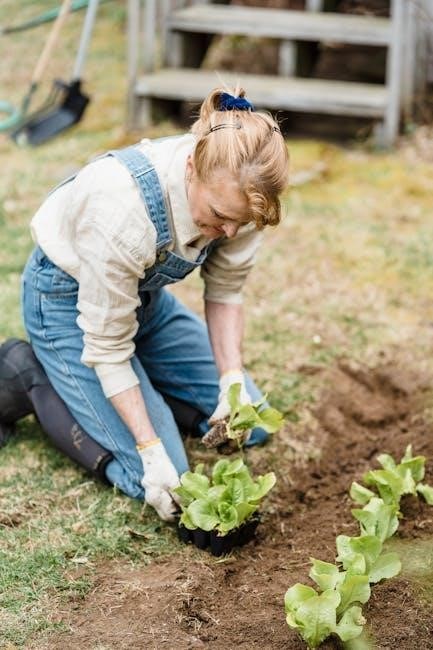Zone 7 offers a moderate climate with a long growing season, from April to November. The average last frost date is April 15th, and the first frost date is November 15th. This allows gardeners to grow a wide variety of vegetables, including cool-weather and warm-weather crops.
Understanding USDA Hardiness Zone 7
USDA Hardiness Zone 7 is one of the 11 zones defined by the United States Department of Agriculture to guide plant hardiness. This zone is characterized by an average annual extreme minimum temperature of 0°F to 10°F (-17°C to -12°C). Zone 7 has moderate winters and warm summers, making it suitable for a wide variety of vegetables. Gardeners in this zone enjoy a relatively long growing season, with distinct spring, summer, and fall planting opportunities. Understanding this zone helps gardeners choose plants adapted to its climate and plan planting schedules effectively. Zone 7 is ideal for both cool-weather and warm-weather crops.
Importance of Planting Times in Zone 7
Planting times are crucial in Zone 7 due to its moderate winters and warm summers. Timing ensures vegetables grow during their preferred seasons, avoiding frost damage or heat stress. Cool-weather crops thrive in spring and fall, while warm-weather crops excel in summer. Planting too early or late can lead to poor growth or bolting. Proper timing also aligns with soil readiness and moisture levels, optimizing plant health. By adhering to a planting schedule, gardeners can maximize yields and enjoy a bountiful harvest throughout the year. This makes understanding planting times essential for successful gardening in Zone 7. Timing is key to a productive garden.
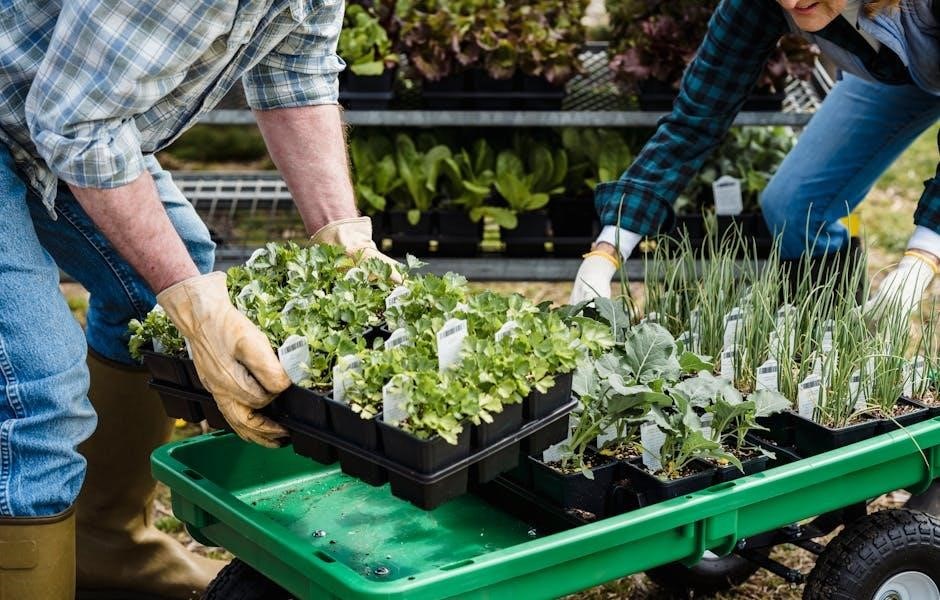
General Vegetable Planting Guide for Zone 7
Zone 7 offers two growing seasons, allowing gardeners to cultivate diverse vegetables. Proper timing and soil preparation ensure optimal growth and productivity throughout the year.
Best Months for Planting Vegetables
In Zone 7, the ideal planting months vary by vegetable type. Spring planting begins in early March for cool-season crops like broccoli, spinach, and carrots, continuing through May for warm-season crops like tomatoes and peppers. Summer planting starts in late May to early June, focusing on heat-tolerant varieties such as zucchini and okra. Fall planting occurs in late July to early September, allowing cool-season crops like kale and cabbage to mature before frost. Winter crops, such as collards and mustard greens, are planted in September or October for a late winter harvest.
Key Frost Dates and Their Impact on Planting
In Zone 7, the average last spring frost date is around late March to early April, while the first fall frost occurs in mid to late October. These dates are critical for planting decisions. Spring crops should be planted after the last frost to protect tender plants from damage. Conversely, fall crops need to be planted 8–10 weeks before the first frost to allow time for maturation. Understanding these dates helps gardeners avoid frost damage and ensures optimal growth for both cool- and warm-season vegetables, maximizing the growing season’s potential.
Soil Preparation Tips for Zone 7 Gardens
Zone 7 gardens benefit from well-prepared soil to support healthy plant growth. Start by testing your soil pH, aiming for a range of 6.0–6.5 for most vegetables. Add organic matter like compost or aged manure to improve soil structure and fertility. Till the soil to a depth of 8–10 inches to loosen it and promote root development. Incorporate a balanced fertilizer (e.g., 10-10-10) before planting; Proper drainage is essential, so avoid compacting the soil. Mulch around plants to retain moisture and suppress weeds. These steps create a fertile, well-draining foundation for a thriving Zone 7 vegetable garden.
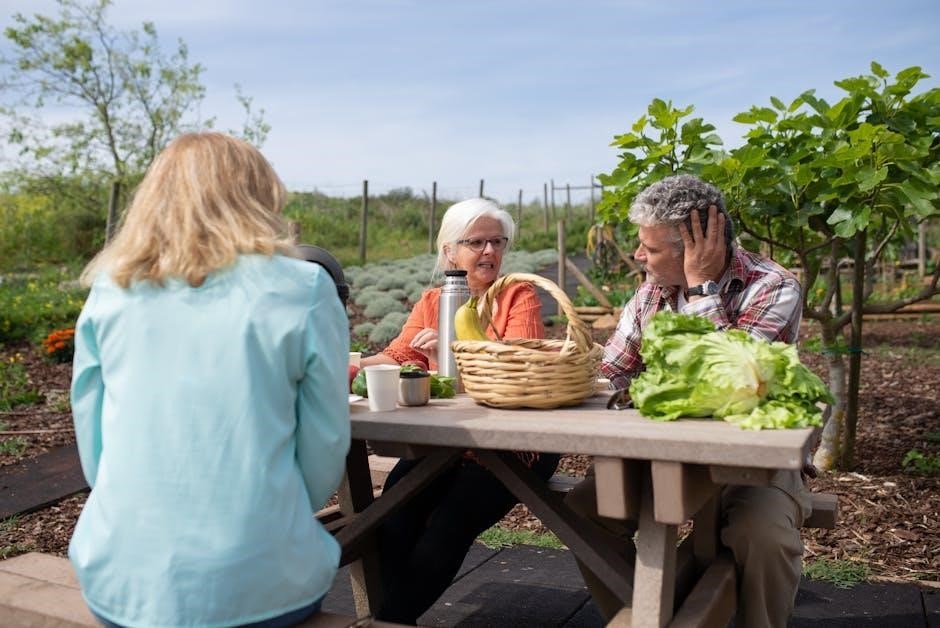
Spring Vegetable Planting in Zone 7
Zone 7 gardeners can start planting cool-weather vegetables in late winter to early spring, transitioning to warm-weather crops as temperatures rise, ensuring a bountiful harvest season.
Cool-Weather Crops: Broccoli, Kale, Lettuce, and More
Cool-weather crops thrive in Zone 7’s spring, tolerating light frosts and cooler temperatures. Broccoli, kale, and lettuce are ideal for early planting, as they mature before summer heat. Spinach and arugula also excel, preferring the cooler conditions of late winter to early spring. Plant these crops 4-6 weeks before the last frost date for a robust start. Kale can be direct-sown 8 weeks before frost, while lettuce and spinach grow quickly, allowing for successive plantings. These crops prefer well-draining, fertile soil and partial shade, making them perfect for Zone 7’s transitional spring weather. They’re foundational for a diverse and productive garden.
Warm-Weather Crops: Tomatoes, Peppers, and Cucumbers
Zone 7 gardeners can successfully grow warm-weather crops like tomatoes, peppers, and cucumbers once the soil has warmed and the threat of frost has passed. These crops thrive in temperatures above 65°F and require full sun. Tomatoes and peppers should be planted after the last frost date, typically in early May, while cucumbers can be direct-sown in late May. Well-draining soil enriched with compost ensures robust growth. Proper spacing and support, such as cages or trellises, are essential for indeterminate tomato varieties. Regular watering and mulching help retain moisture and suppress weeds, promoting a bountiful harvest of these summer staples.
Optimal Planting Times for Spring Vegetables
In Zone 7, the optimal planting times for spring vegetables vary based on the last frost date, typically late March to early April. Cool-weather crops like broccoli, spinach, and lettuce should be planted 4-6 weeks before the last frost. Root vegetables such as carrots and beets can be sown 1-2 weeks before the frost date. Warm-weather crops, including tomatoes and peppers, should be planted after the soil has warmed and frost danger has passed. Check extended weather forecasts to ensure timely planting and avoid unexpected frosts, ensuring a successful spring harvest.
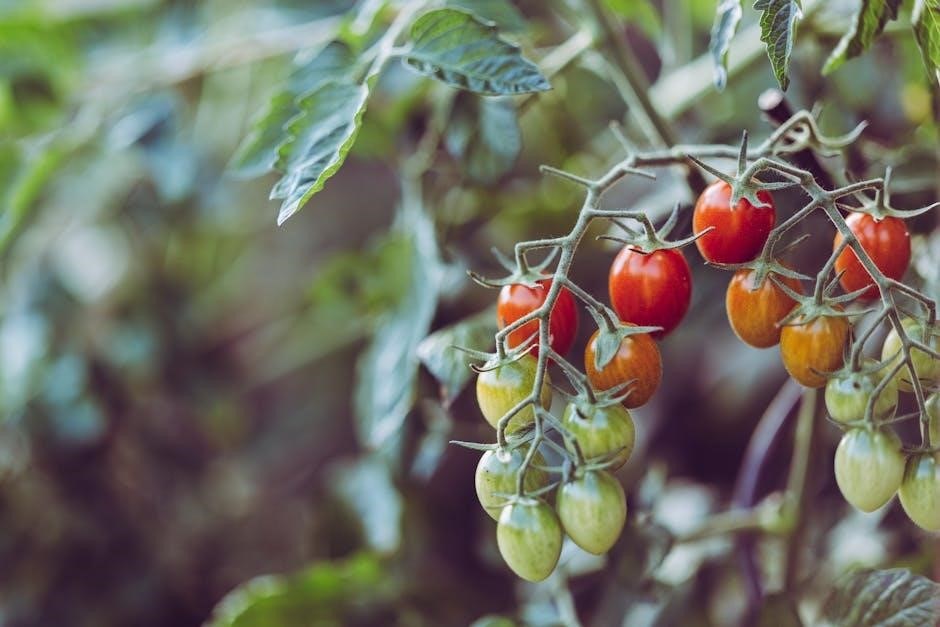
Summer Vegetable Planting in Zone 7
Zone 7’s warm summers support a variety of vegetables. Plant heat-loving crops like tomatoes, peppers, and cucumbers when soil temperatures reach 65°F. Incorporate compost for fertility and water consistently to maximize yields.
Heat-Tolerant Vegetables: Zucchini, Carrots, and Radishes
Zucchini, carrots, and radishes thrive in Zone 7’s summer heat. Zucchini prefers well-drained soil and full sun, producing abundant fruit throughout the season. Carrots grow best in loose, sandy soil and tolerate high temperatures, making them ideal for mid-summer planting. Radishes, with their fast growth rate, can be harvested in as little as 25 days and are excellent for intercropping. These vegetables are perfect for extending the growing season and adding diversity to summer meals. Plant them after the last frost date for optimal results.
Managing Soil and Water During Hot Months
In Zone 7’s hot summer months, proper soil and water management is crucial for vegetable success. Maintain soil health by adding organic matter like compost to improve water retention and structure. Mulch around plants to reduce soil temperature and prevent moisture loss. Use drip irrigation or soaker hoses for efficient watering, avoiding overhead sprinklers that waste water. Water deeply in the early morning or evening to minimize evaporation. Monitor soil moisture by checking the top few inches daily. Avoid overwatering, as it can lead to root rot and other issues. Ensure good drainage to prevent waterlogged soil, especially for heat-tolerant crops.
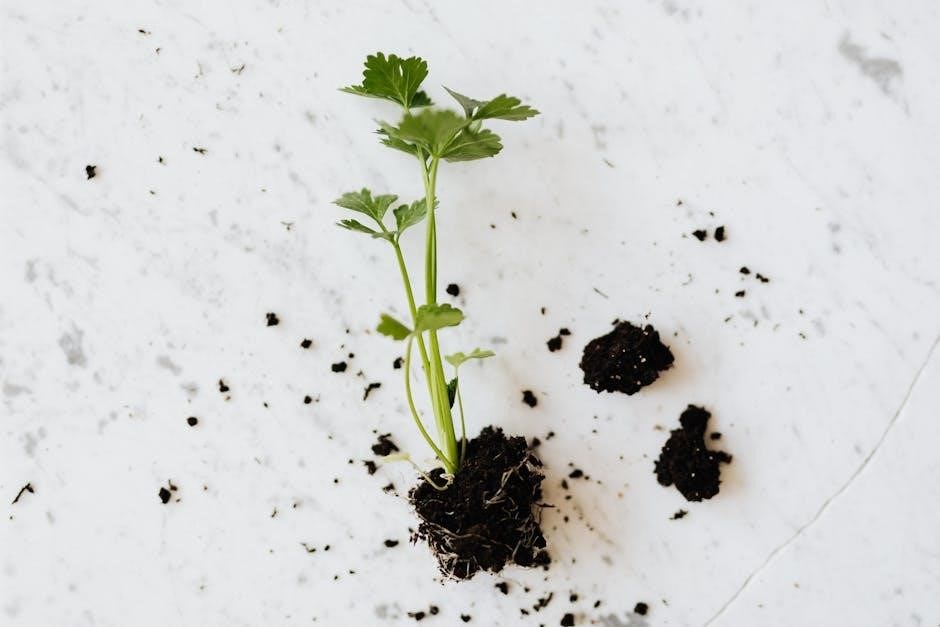
Fall Vegetable Planting in Zone 7
Fall planting in Zone 7 begins in late summer, offering a second growing season with cooler weather ideal for crops like spinach and cabbage, ensuring a plentiful harvest.
Preparing for the Second Growing Season
Preparing for fall planting in Zone 7 involves assessing soil health, removing summer crop debris, and amending the soil with compost or well-rotted manure. Test the pH levels to ensure optimal growing conditions for fall vegetables. Till the soil to a depth of 8-10 inches to loosen and aerate it. Plan the layout to maximize space and sunlight. Select varieties of vegetables suited for cooler weather, such as spinach, kale, and Brussels sprouts. Order seeds or seedlings in advance to avoid delays. Proper preparation ensures a strong start for the second growing season, leading to a successful fall harvest.
Best Vegetables for Fall Harvest: Spinach, Cabbage, and Brussels Sprouts
Spinach, cabbage, and Brussels sprouts are excellent choices for Zone 7’s fall harvest. Spinach matures quickly, thriving in cooler temperatures and partial shade. Cabbage and Brussels sprouts, both brassicas, prefer well-draining soil and full sun,tolerating light frosts. Plant spinach 4-6 weeks before the first frost, while cabbage and Brussels sprouts should be planted 8-12 weeks prior. These vegetables benefit from companion planting with herbs like garlic or dill to deter pests. Their ability to withstand cooler conditions makes them ideal for Zone 7’s fall season, providing fresh, nutritious produce well into autumn.
Planting Strategies to Avoid Frost Damage
To protect your fall vegetables from frost damage in Zone 7, use strategic planting techniques. Plant frost-sensitive crops like spinach and kale earlier in the season to mature before the first frost. Use row covers or cold frames to shield plants from sudden temperature drops. Succession planting allows you to harvest crops before frost, while starting seedlings indoors and transplanting later extends the growing season. Mulching around plants retains soil warmth, and selecting frost-tolerant varieties ensures better survival. These methods help maximize your fall harvest and protect your crops from unexpected frosts.
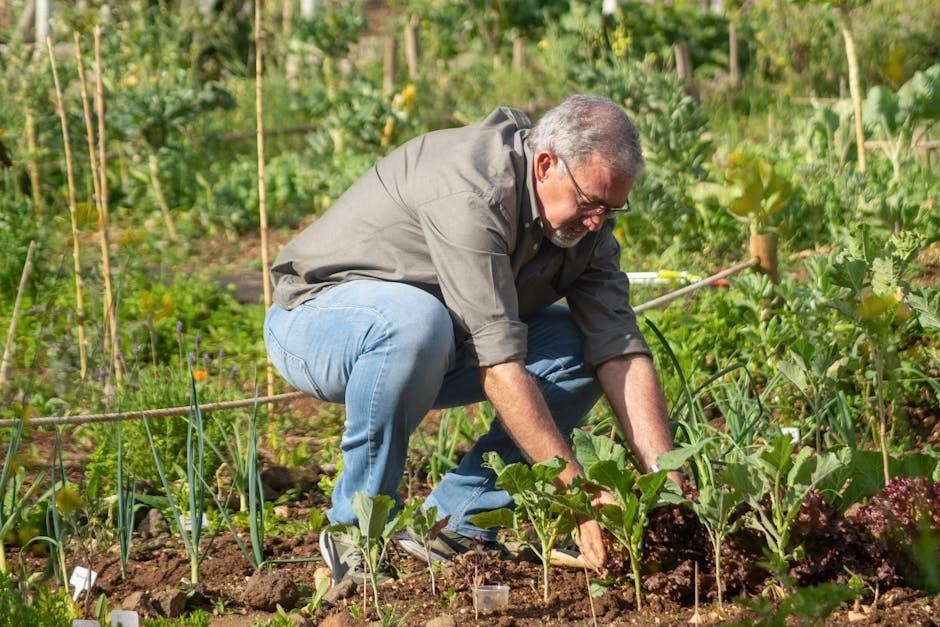
Winter Vegetable Planting in Zone 7
Zone 7’s moderate winters allow for cool-season crops like spinach, kale, and Brussels sprouts. Plant in late summer or early fall for a winter harvest. Mulch and row covers protect plants from extreme cold, ensuring a bountiful winter yield.
Cold-Hardy Vegetables: Collards, Spinach, and Mustard Greens
Cold-hardy vegetables like collards, spinach, and mustard greens thrive in Zone 7’s winter conditions. These crops tolerate light frosts and cooler temperatures, making them ideal for fall or early winter planting. Collards and mustard greens prefer well-drained soil and partial shade, while spinach excels in full sun with rich, fertile ground. Plant seeds 8 weeks before the first frost for a late fall harvest. Mulch or row covers can protect plants during extreme cold snaps. These vegetables are not only resilient but also packed with nutrients, offering a fresh, healthy harvest during the colder months.
Using Cover Crops and Mulch for Winter Protection
Cover crops and mulch are essential for protecting Zone 7 gardens during winter. Cover crops like clover or rye enrich the soil, suppress weeds, and prevent erosion. Mulch, such as straw or wood chips, retains moisture and regulates soil temperature. Apply mulch after the first frost to shield roots from freezing. For winter crops, plant cover crops 6-8 weeks before the first frost. Mulch heavily around plants to insulate them. These practices ensure soil health and protect crops from harsh winter conditions, promoting a robust start for spring growth.
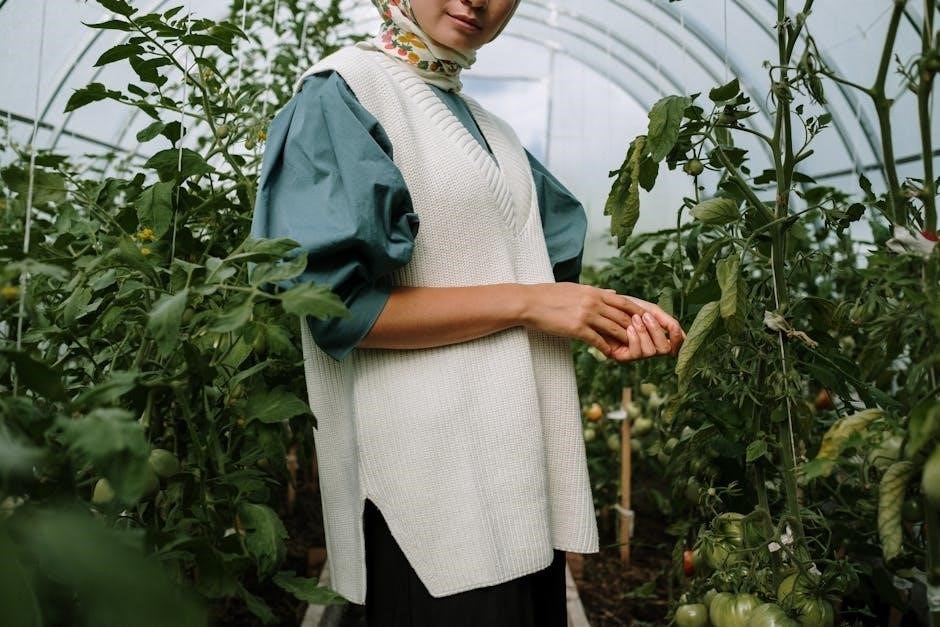
Extending the Growing Season in Zone 7
Cold frames and greenhouses shield plants from frost, while succession planting maximizes harvests. These methods extend the growing season, allowing gardeners to enjoy crops year-round in Zone 7.
Succession Planting: Maximizing Your Harvest
Succession planting is a strategic approach to extend the growing season by planting crops in intervals. This method ensures a continuous harvest and maximizes garden space. For Zone 7, plant cool-season crops like spinach or radishes every 1-2 weeks in early spring. After they mature, replace them with warm-season varieties such as beans or zucchini. In late summer, start another round of cool-season crops like kale or carrots. This technique prevents overcrowding and ensures a steady supply of fresh produce throughout the year, making the most of Zone 7’s moderate climate.
Using Greenhouses or Cold Frames
Greenhouses and cold frames are excellent tools for extending the growing season in Zone 7. Greenhouses provide year-round protection, allowing gardeners to grow warm-weather crops like tomatoes and peppers even in cooler months. Cold frames, simpler and more affordable, offer frost protection for hardy crops such as spinach and kale. Both structures trap heat during the day and retain it at night, shielding plants from extreme temperatures. By using these, Zone 7 gardeners can start seeds earlier in spring and continue harvesting into fall, overcoming weather challenges and enjoying a more productive garden.
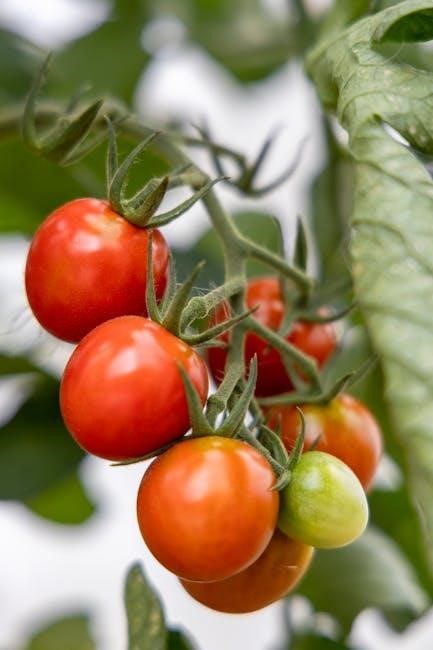
Common Challenges in Zone 7 Vegetable Gardening
Gardeners in Zone 7 often face challenges like unpredictable weather, pests, and soil degradation. These factors require adaptive strategies to maintain healthy, productive vegetable gardens;
Pests and Diseases: Prevention and Treatment
In Zone 7, common pests include aphids, hornworms, and squash bugs, while diseases like powdery mildew and leaf spot can damage crops. Prevention involves crop rotation, resistant varieties, and hygiene. Physical barriers and organic pesticides help control pests. For diseases, treat with neem oil or copper fungicides. Regular monitoring and early intervention are crucial to prevent outbreaks. Healthy soil and balanced ecosystems reduce vulnerability. Integrated pest management strategies ensure sustainable gardening practices in Zone 7.
Weather Fluctuations and Their Impact on Crops
Weather fluctuations in Zone 7, such as unseasonal frosts, heatwaves, and heavy rains, can significantly impact vegetable crops. Spring frosts may damage early plantings, while summer heatwaves can stress warm-weather crops. Fall frosts signal the end of the growing season, while winter cold snaps affect overwintering plants. To mitigate these effects, gardeners should use row covers for frost protection, employ drip irrigation for droughts, and plant varieties with resilience to temperature extremes. Monitoring weather forecasts and adapting planting schedules can help minimize crop losses in Zone 7’s variable climate.
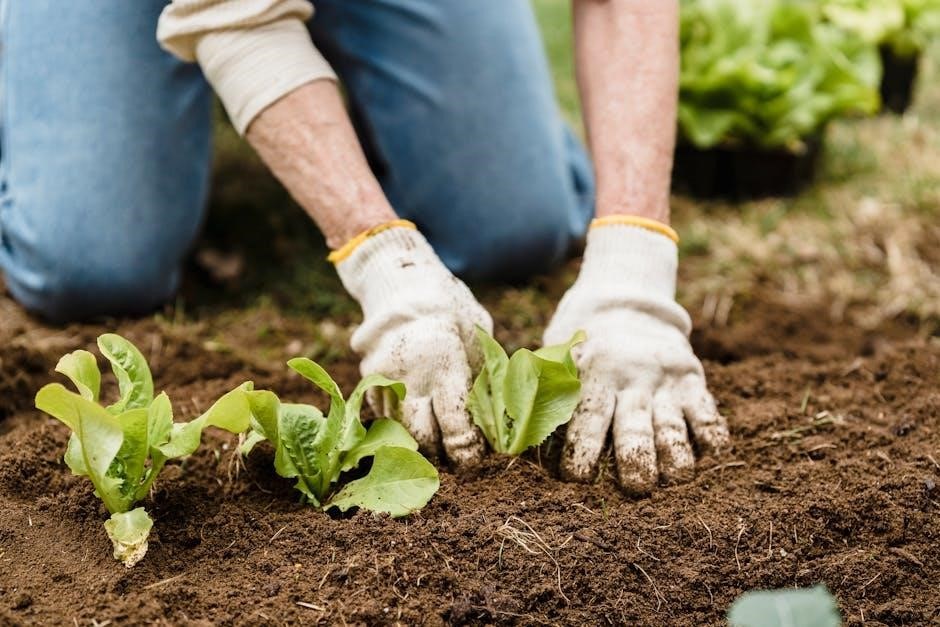
Zone 7 Vegetable Planting Calendar
A Zone 7 planting calendar provides a monthly guide for sowing seeds and transplanting vegetables, ensuring optimal growth based on seasonal weather patterns and frost dates.
Month-by-Month Planting Schedule
In Zone 7, the planting schedule varies by month to align with seasonal weather patterns. January is ideal for planning and ordering seeds. February marks the start of indoor seedlings like onions and spinach. March is perfect for broccoli, kale, and peas. April brings carrots, beets, and radishes, along with starting tomatoes and peppers indoors. May is for transplanting tomatoes and peppers, as well as direct sowing cucumbers and squash. June focuses on warm-weather crops like okra and southern peas. July is for planting fall crops such as zucchini and winter squash. August begins fall vegetable planting with spinach, kale, and broccoli. September continues with carrots, beets, and radishes. October is for garlic and spinach, while November focuses on cold-hardy greens like kale and arugula. December wraps up with planning and reviewing the year’s garden performance.
Harvest Times for Popular Vegetables
In Zone 7, harvest times for vegetables vary based on the crop and growing conditions. Spinach and lettuce are ready in late spring, around late April or early May. Tomatoes typically ripen in mid-to-late summer, July and August. Peppers are harvested in late summer, while cucumbers and squash are ready in July. Root vegetables like carrots and radishes are ready in late spring, while broccoli and kale mature in early fall, around September and October. Spinach planted in August is harvested in late fall. Knowing these timelines ensures optimal flavor and yield for your garden.
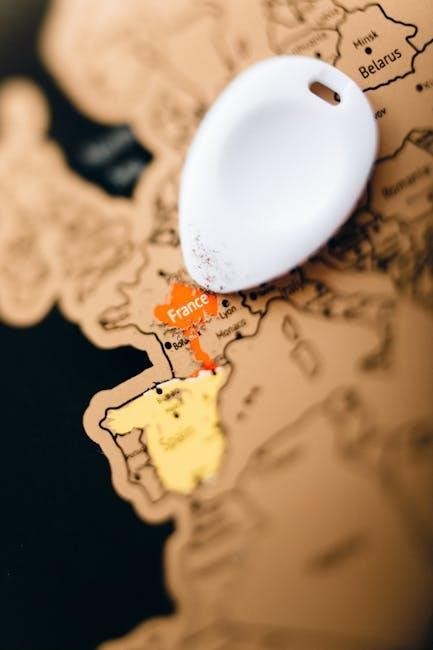
Tips for Small-Space Vegetable Gardening in Zone 7
Maximize space with vertical gardening, container gardens, and succession planting. Choose compact or dwarf varieties to suit smaller areas. Utilize trellises or cages for support.
Container Gardening Options
Container gardening is ideal for small spaces in Zone 7. Use durable containers with drainage holes, such as plastic, wood, or ceramic. Select compact or dwarf vegetable varieties like cherry tomatoes, leafy greens, or herbs. Ensure containers are at least 5-7 gallons for root crops like carrots or radishes. Add a high-quality potting mix and fertilize regularly. Place containers in areas receiving 6+ hours of sunlight. Opt for self-watering containers to manage moisture, especially during Zone 7’s warm summers. Rotate crops seasonally to maximize space and yield. Trellises or cages can support vining plants like peas or cucumbers.
Vertical Gardening Ideas
Vertical gardening maximizes space in Zone 7, perfect for small yards or balconies. Use trellises, arbors, or wall-mounted systems to grow vining plants like peas, beans, or cucumbers. Install a DIY pallet or cedar plank wall for herbs or leafy greens. Opt for tiered planters or hanging baskets to layer vegetables like cherry tomatoes or strawberries. Train plants like zucchini or squash to climb upward. This method enhances air circulation and sunlight exposure, boosting yields. Rotate crops seasonally to enjoy year-round growth. Vertical gardens also add aesthetic appeal while utilizing minimal ground space effectively.
